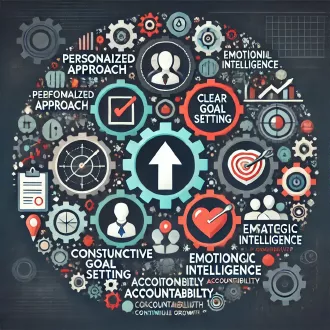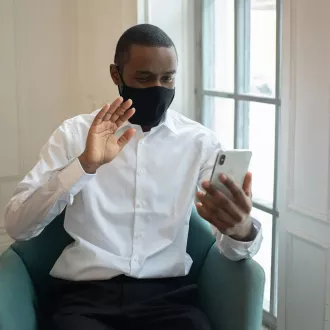Transcription Importance of body language
In the context of leadership and teamwork coaching, modeling effective communication behavior is crucial, as the feedback given to coachees is often related to their communication skills. Therefore, it is essential to be aware of how our actions and body language promote or hinder the effectiveness of our communication.
Often, we are unaware of our own nonverbal cues and how these may be perceived by others. We do not see ourselves as others see us. The coach's role includes increasing coachees' self-awareness by providing constructive feedback on their behavior. While it is not a matter of radically changing from being a negative person to being positive, it is possible to make adjustments to improve communication.
We react to visual as well as verbal stimuli. Our perception is not only based on what we hear, but also on what we see in terms of body language. In coaching, it is essential to develop sensitivity to these aspects. Becoming a good observer of others' nonverbal signals is essential to better understand their feelings and thoughts.
Postures, gestures and physical behaviors greatly influence how we relate to others. For example, body language can make an exchange welcoming or intimidating. A slow, deliberate speech pattern communicates friendliness, while a fast one may appear more aggressive. Body language that is open and oriented toward the person we are talking to creates a warm and receptive environment, while one that is closed can generate defensive reactions.
A coach should be aware of his or her own body language as well as that of his or her coachees. Body language can be a tool to invite conversation and make the client feel comfortable, valued and open to suggestions. Signals such as nodding, leaning forward and smiling indicate interest and openness. Negative gestures, such as turning away or crossing arms, can generate resistance.
The coach can use observation of body language to guide sessions and create an atmosphere of trust. If the coachee appears closed or uncomfortable, the coach can adapt his or her approach to generate more openness. Attention to body language allows the coach to interpret the coachee's responses more fully and effectively.
Here we explore the key aspects of body language that you should consider for effective communication in your coaching process:
- Nonverbal communication: body language comprises gestures, facial expressions, postures, movements and tones of voice. These nonverbal elements can communicate precise emotions, attitudes and moods.
- Consistency and congruence: Body language should be congruent with spoken words. When there is consistency between verbal and nonverbal language, authenticity and credi
body language




